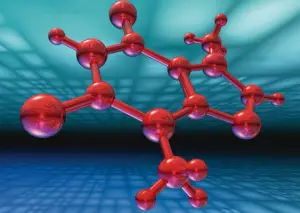
Contents
show
Chemical Bonding
The binding forces between atoms or molecules are known as a chemical bond. There are two types of chemical bond.
- Primary
- Secondary
Primary Bond
- These are the interatomic bond.
- These bond are having higher bond energy.
- Examples: Ionic, covalent and Metallic bond.
Secondary Bond
- These are the intermolecular bond.
- These bond are having lesser bond energy as compared to primary bond.
- Examples: Vander waal’s and hydrogen bond.
Primary Bond
1. Ionic Bond
- The ionic bond is a bond resulting from the electrostatic interaction of oppositely charged ions by transfer of electrons from one to other.
- Ionic solid is formed particularly from elements on the left and right hand side of the periodic table. Example: Group-1 & Group-7 elements.
- Group-1 elements are called Alkalis element (Li,Na,K,Rb,Cs,Fr).
- Group-7 elements are called Halogen’s element (Br, Cl, I, F).
- The Alkali halide form between the alkalis metal and halogen are strongly ionic.
General Characteristics of Solids having Ionic Bond
- Higher strength
- higher melting point
- hard
- Electrical insulator
- Brittle (that can be break easily)
- Malleable (can be shaped)
2. Covalent Bond
- These bond forms by sharing of the electron between neighbouring atom.
- Examples: Si, Ge, CO2
General Characteristics of Material having Covalent Bond
- Very hard
- very brittle
- very high melting point
- Conductor (Tin), Semiconductor (Si, Ge), Insulator (Diamond).
3. Metallic Bond
- The outer most electron of metal atom are weakly bound and when such atom interacts to become solid; the electron form a gas of electron known as electron gas or electron cloud.
- The valence electron in a metal can’t be associated with a particular atom. They belong to all atom.
General Characteristics of Material having Metallic Bond
- Higher thermal and electric property.
- Metals are opaque.
- They are having surface lustre.
- Metallic bonds are non-directional. It means that bond strength is equal in all direction.
- The highest degree of metallic bonding occurs in alkali metal.
Vander-Waal Bonding
- An electron revolving around a nucleus may be considered to represent a rotating dipole.
- Such a dipole will induce a dipole in neighbouring atoms such that a dipole attraction between the atom results.
- Vander Waal bonds are weaker bonds.
- Examples: Solid Ar, Solid He, Solid hydrogen.
- Inert or rare gas is an example of vander waal bonding.
- Hydrogen bond is a strong type of vander wall bonding.
